The bluebell spectrum
This is the first spring that I've been paying attention to wildflowers, and so for the first time I've discovered the delight of bluebells, the familiar spring bulbs that appear every April and May, laying an unmistakable purplish-blue carpet across Britain's woodlands and gardens. They're the last major spring flower to arrive each year, and therefore a nice herald of the pleasant summer we're sure to have very soon.
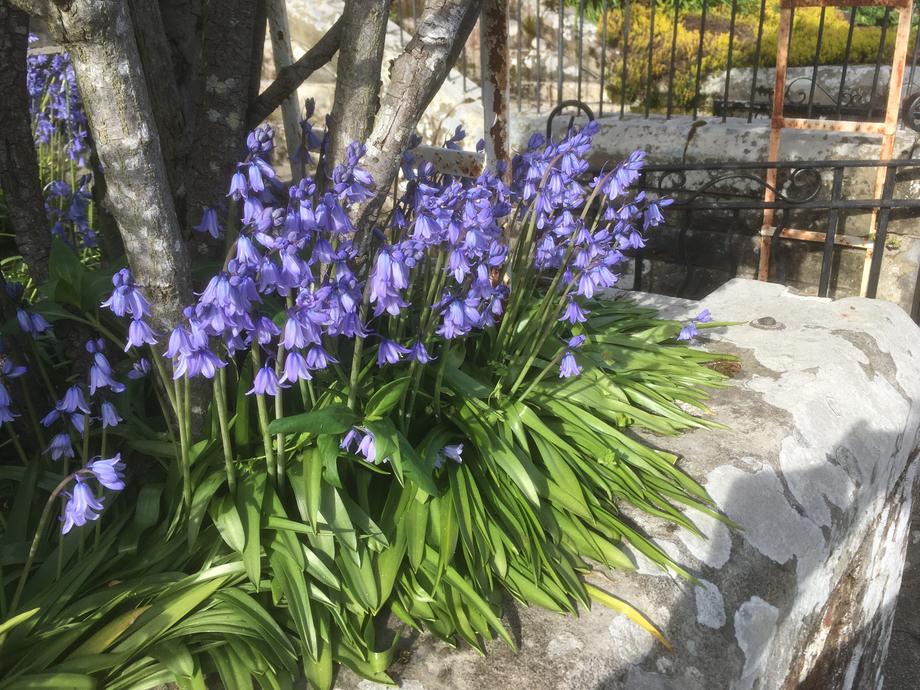
Some bluebells on Lade Braes, St Andrews.
As I mentioned in a previous post, I've been doing my best to identify any plants I see, so when bluebell season rolled around in St Andrews a few weeks ago, I went for a walk along Lade Braes with Collins British Common Wild Flower Guide, and stopped to take a proper look at the plants around me.
Interestingly, it turns out that some bluebells aren't blue: if you walk through an area with bluebells you'll see some plants that are pink or white, scattered among the blue ones. Other than the colour, they're identical to the plants around them, a bit like a shiny Pokémon.
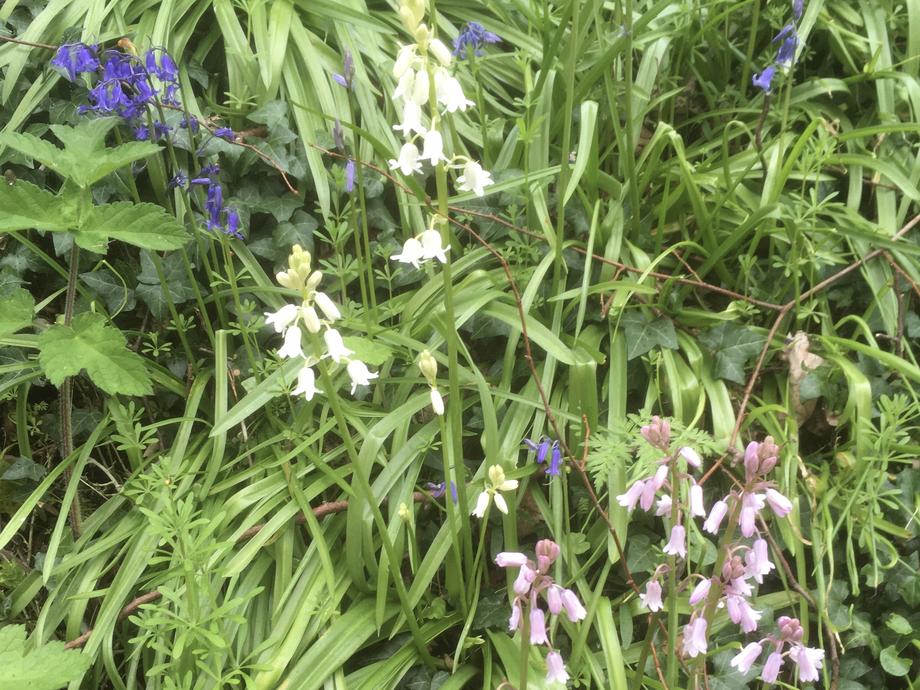
Three different colours of bluebell together on Lade Braes, St Andrews.
I was already vaguely aware of the two main types of bluebell people talk about in the UK: the common bluebell (Hyacinthoides non-scripta) and the Spanish bluebell (Hyacinthoides hispanica) – or as my mum calls them, "nice English bluebells" and "nasty Spanish bluebells". Basically, H. non-scripta is native to Britain, while H. hispanica only appeared recently as a garden escapee, and has spread rapidly. There's some concern that the invasive H. hispanica could pose a threat to the population of native H. non-scripta, but from what I've read online, there's some doubt about this: the native species is still widespread, and I'm not sure experts are seriously concerned.
There are several key characteristics that separate H. non-scripta from H. hispanica.
|
|
|---|---|
Native bluebell H. non-scripta |
Spanish bluebell H. hispanica |
"Nodding" head, with all flowers on one side |
"Erect" head, with flowers on all sides |
Tubular flowers (long and narrow) |
Campanular flowers (open bell shape) |
Cream anthers |
Blue anthers |
(Anthers are the six pollen-bearing dots at the ends of the stamens, found easily by looking into the flower.)
So, I sat down on a bench and looked at some of the bluebells around me, expecting to quickly find out which of the two species they were. But I soon found out it's much, much more complicated than that.
The plants I found didn't fit the neat dichotomy of the key above. I found plants that mixed different features from each species – nodding but with campanular flowers, or erect but with cream anthers – and I couldn't find any consistent pattern that would let me sort them into species. This is mentioned in the book as an afterthought: the two species "hybridise freely", making the hybrid species Hyacinthoides × massartiana, which seemed to explain the variation I was seeing. Apparently this hybridisation occurs so easily that some botanists consider the two to be variants of the same species, which I can easily believe.
I wanted to know more, so I went home and checked the ultimate authority: Clive Stace's New Flora of the British Isles. And along with thorough descriptions of the different species, the entry for the hybrid H. × massartiana ended with a very telling sentence:
It is intermediate in all characters and fertile, forming a complete spectrum between the parents and often natd in absence of both.
—Clive Stace, New Flora of the British Isles
Yep, that's right: the hybrid bluebell can have literally any random features of either parent species, and they can all breed together without any restrictions. I'm not a botanist, but why these are considered separate species is beyond me. What a cop-out!
However, this is not where my adventure ended, but where it began. Being unable to find anything on hybrid bluebells other than "they're somewhere in between", I decided to do some research for myself. The key above has three characteristics that can each go two different ways, suggesting 8 possible combinations of characteristics. Besides this, flowers can appear in blue, pink and white, making 24 possibilities in total! How many of these were possible, and how many appear in St Andrews? I got my boots on and went out to do some research.
Within one hour, I'd found and photographed 16 different varieties of bluebell, each with a different set of characteristics in the key above. I was delighted by how easy it was to find all these different combinations, and I think it's probably all the ones that exist. The reason I couldn't find all 24 is that it seems blue anthers are only present on blue flowers: the pink and white flowers I found all had cream anthers, and I'm guessing this is due to a lack of pigment preventing any blue anywhere on the plant.
So, ladies and gentlemen, here's my new mathematically rigorous naming scheme for Hyacinthoides in Britain!
Each bluebell is identified by a triple from the cartesian product
where
\(\{b, p, w, B\}\) is the flower colour: \(b\) for blue, \(p\) for pink, \(w\) for white, and \(B\) for blue-with-blue-anthers (the first three have cream anthers);
\(\{n, e\}\) is the apex shape: \(n\) for nodding, and \(e\) for erect;
\(\{t, c\}\) is the flower shape: \(t\) for tubular, and \(c\) for campanular.
So, for example, a pink bluebell with cream anthers, a nodding head and campanular flowers would be denoted \((p, n, c)\). A blue bluebell with cream anthers, an erect apex and tubular flowers would be \((b, e, t)\). The classic H. non-scripta is \((b, n, t)\) while H. hispanica is \((B, e, c)\). And so on.
There are 16 possible combinations in this system, and I've got photos of all of them right here. These are all easily found along a short stretch of Lade Braes between viaduct walk and Canongate Primary School. Here are a few samples:
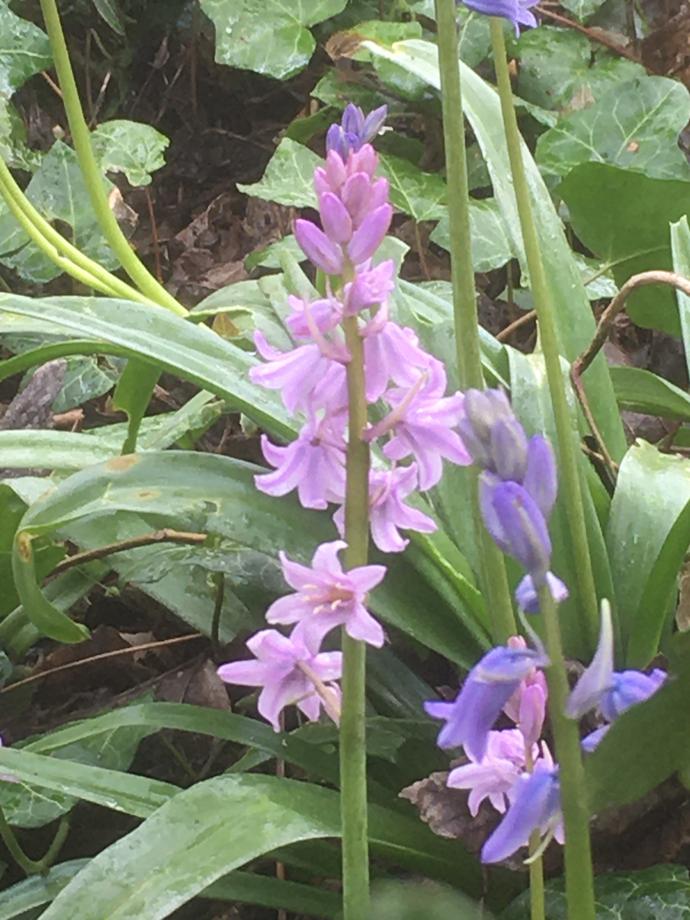
Hyacinthoides \((p, e, c)\)
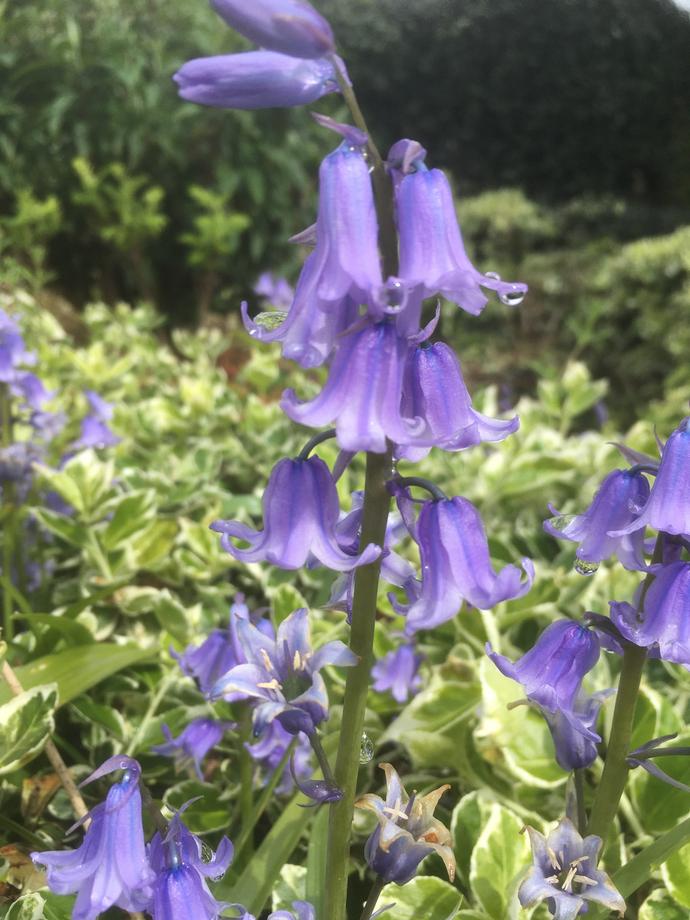
Hyacinthoides \((b, e, t)\)
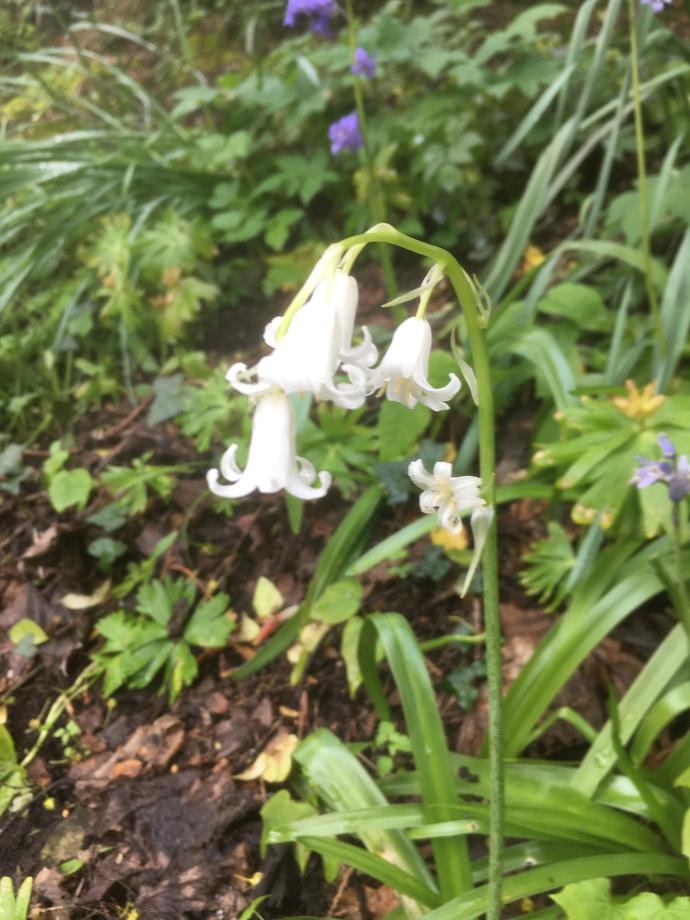
Hyacinthoides \((w, n, t)\)
The system isn't perfect – the two flower shapes are also a bit of a spectrum, with some flowers difficult to put into either \(t\) or \(c\), and some plants bearing flowers in both categories. Again, I'm not a botanist, so it's possible I've also made other mistakes. I'd also like to hear from anyone who's found pink or white flowers with blue (or pink or white) anthers, since I don't actually know this is impossible.
Anyway, I still think it's a good checklist for anyone who wants to go bluebell-spotting. If you try it, let me know which ones you can find!
If there's a bigger point to make here, maybe it's the joy of biodiversity. A couple of decades ago, St Andrews would only have had "pure" H. non-scripta, which would have dominated the landscape with no variation at all except perhaps the petal colour. Today we are treated to a beautiful diversity of flowers with a whole spectrum of shapes and features, and it's made for a really interesting project. I can only assume this diversity is as attractive to insects as it is to amateur botanists, though I'm willing to be corrected on this.
H. hispanica and H. × massartiana have been variously described as "invasive", "threatening" and even "dangerous" due to the perceived threat to the native H. non-scripta population; but with the diversity and beauty of the flowers on display in St Andrews, I can't bring myself to wish they had never arrived. "Native" status is arbitrary anyway, with Collins defining it as any flower that was here before the year 1500, and often needing to use guesswork to apply it. In a few years' time, no one will be left alive who remembers a time before the hybridisation of British bluebells, and is this such a sad thing?
I for one welcome our "nasty Spanish" visitors. I hope they continue to thrive in our woodlands, and I hope that anyone nostalgic for the good old-fashioned \((b, n, t)\) can comfort themselves in the knowledge that any hybrid they see with the slightest one-sided nod or the slightest elongated flowerhead is carrying within it the DNA of our traditional bluebells. In this sense, the "nice English Bluebell" will never be lost.
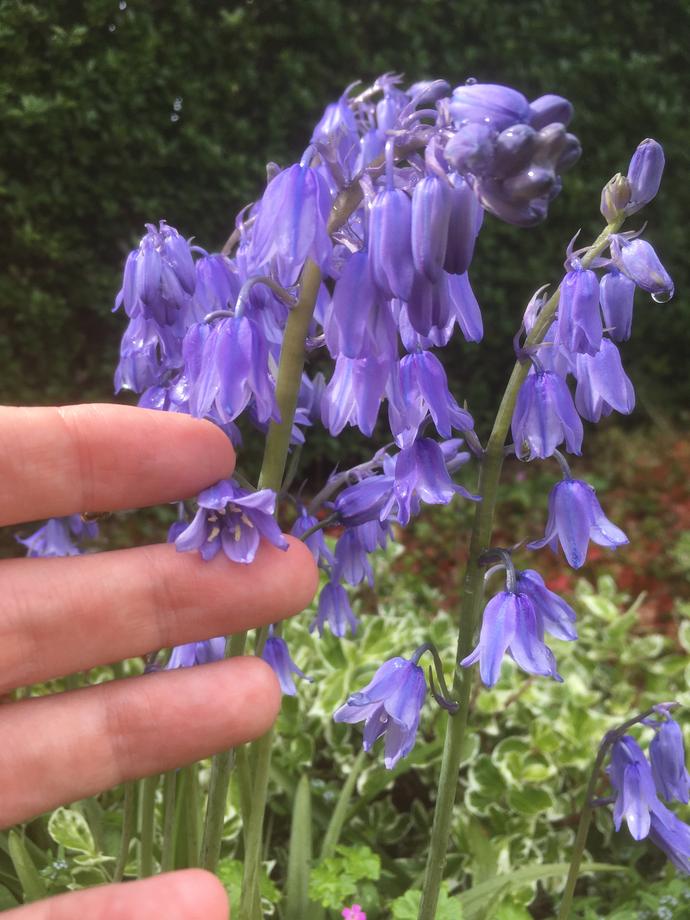
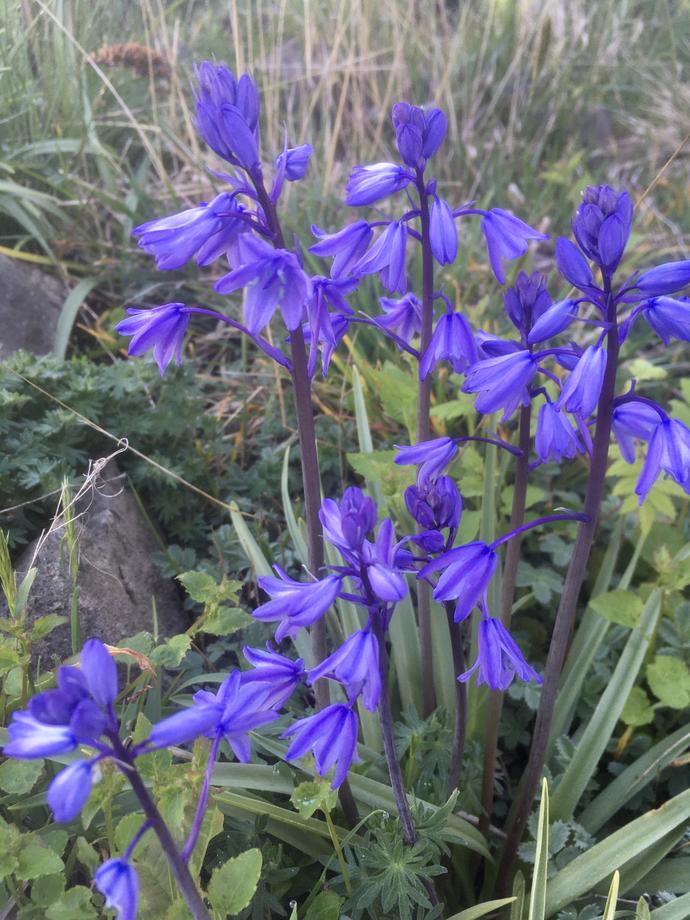
Comments